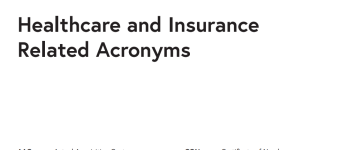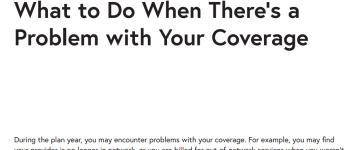With so many terms and details, understanding your health insurance plan can feel overwhelming. Here are some useful tips to understand the information you get from your health insurance. You can also learn what to do if you think something didn’t get covered that should have been covered.
What Is a Claim?
A claim is a request for payment that you or your health care provider submits to your health insurer. You can submit your claim after you receive covered items or services.
Most health insurance plans have a website where you can login and view all claims that you or your health care provider have submitted. You can also see the status of those claims.
What Is an EOB?
After you've visited a health care provider, clinic, or hospital, an Explanation of Benefits (called EOB) from the insurance company will be sent to you. The EOB tells you and your health care provider what portion of the charges are eligible for benefits under your insurance plan. The EOB is the result of the claims process. Remember, the EOB is not a bill.
What to Do if Your Claim Is Denied?
When an insurance company refuses to pay for a visit to a health care provider, treatment, test, or procedure, this is called a denial. The denial can be made before the service is provided. For example, a refusal to approve a service that a health care provider has ordered. The denial can also be made after the service has been given.
Whether you’re covered by a private insurer, Medicaid, or Medicare, you can appeal denials. The appeals process must follow different regulations and rules, called a grievance procedure. The process may differ by state or by insurance company. State laws cover some parts of private appeals, while federal law covers others. State law may give you additional protections, but not always. The appeals process for all people who have a group health plan may differ as well.
Several organizations are available to help guide people with bleeding disorders through the appeals process. Many organizations and pharmaceutical companies offer co-pay assistance, coinsurance, temporary refills, free drug programs, or other patient assistance programs.
Where can I find other resources?
NBDF’s Personal Health Insurance Toolkit: this resource has many useful tools for navigating insurance plan terms and issues.
Healthcare and Insurance Acronyms and Glossary
What to do When There’s a Problem with Your Coverage
Fact Sheet on Appeals and Grievances
Patient Advocate Foundation: a national, non-profit organization that serves as a liaison between patients, insurers, employers, and creditors. The organization helps people to resolve insurance, job retention, and/or debt crisis matters because of their diagnosis. The Patient Advocate Foundation safeguards patients through effective mediation, access to care, employment support, and protecting financial stability.



